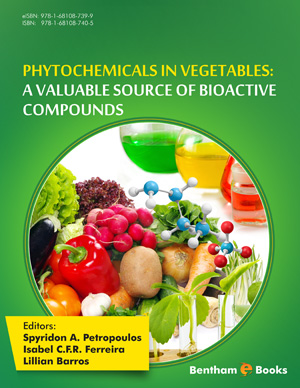Abstract
Parsley (Petroselinum crispum L.), celery (Apium graveolens L.), celeriac (Apium graveolens var. rapaceum), carrot (Daucus carota L.), parsnip (Pastinaca sativa L.), lovage (Levisticum officinale Koch.) and angelica (Angelica archangelica L.) are vegetable plants belonging to the Apiaceae family. They are often used as spices due to their characteristic aroma, originating from the volatile compounds present in the plant tissues. Mainly, all parts of the plant i.e. roots, leaves and fruit are used in nutrition. However, the focus of this chapter is plant fruit (i.e. seed), which is mostly used as spice. The contemporary method used for the analysis of volatiles compounds is called headspace and it is widely applied in flavor chemistry. The dominant compounds in P. crispum are α-pinene (46.2-49.0%) and β-pinene (33.5- 35.4%), while in A. graveolens, it is limonene (84.1-94.4%). In D. carota, the main components are sabinene (28.3%) and α-pinene (25.0%), while in P. sativa fruit, it is octyl ester of butanoic acid (53.8%) and 1-octanol (27.6%). In L. officinale and A. archangelica, the dominant component in fruit is β-phellandrene (77.1% and 84.7%, respectively).
Keywords: Angelica, Apiaceae, Aroma, Celery, Celeriac, Carrot, Headspace, Lovage, Parsley, Parsnip, Terpenes, Volatile compounds.






















